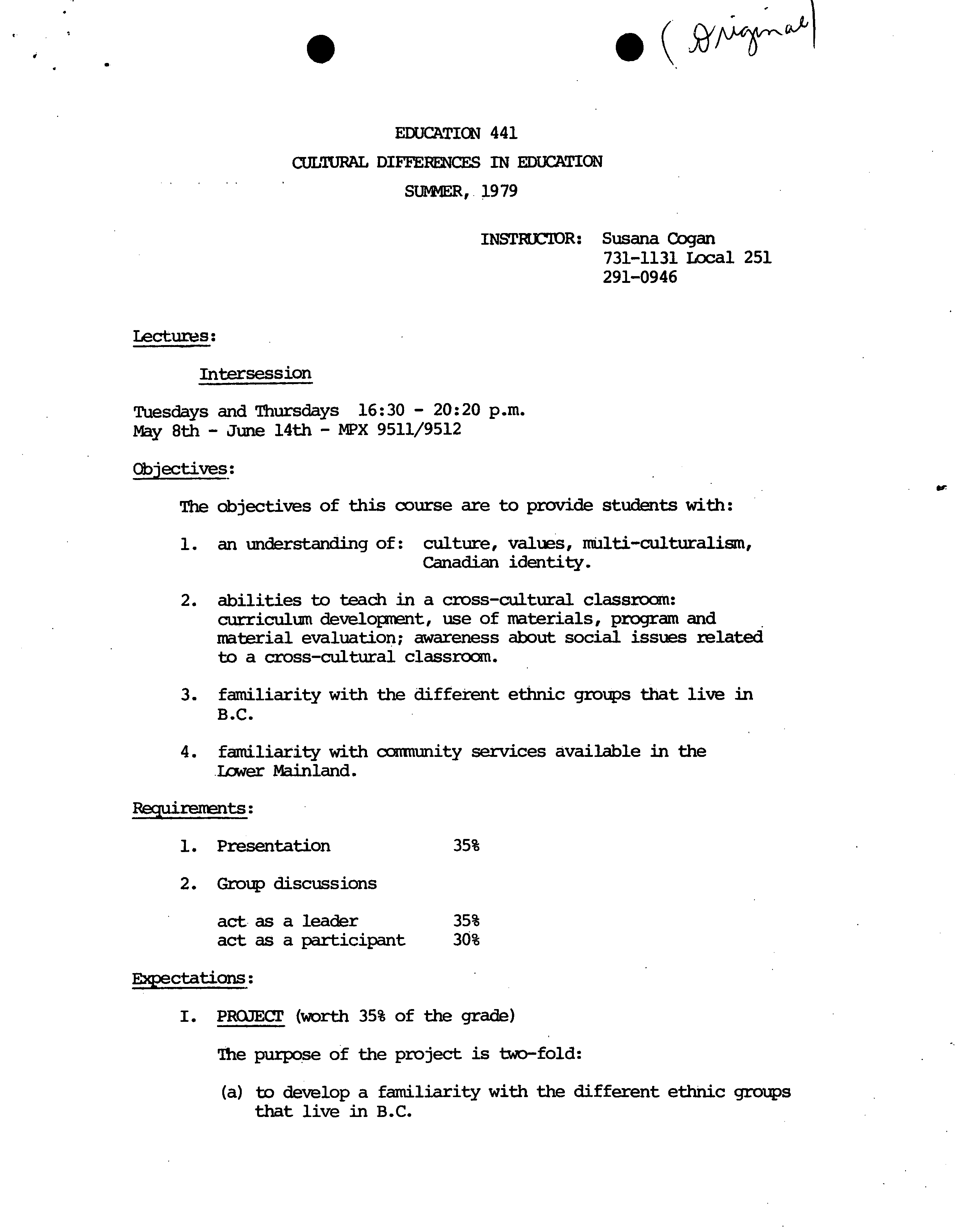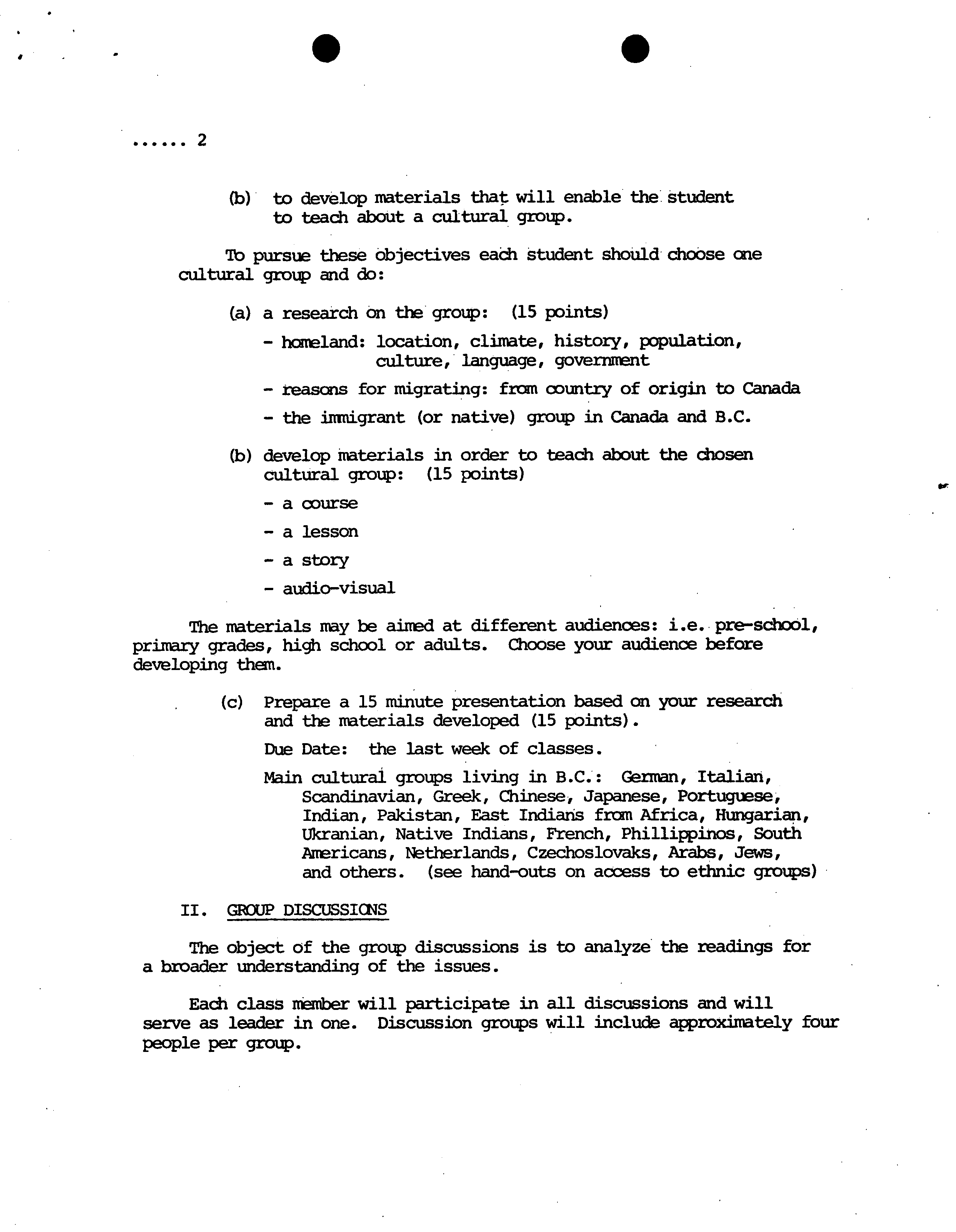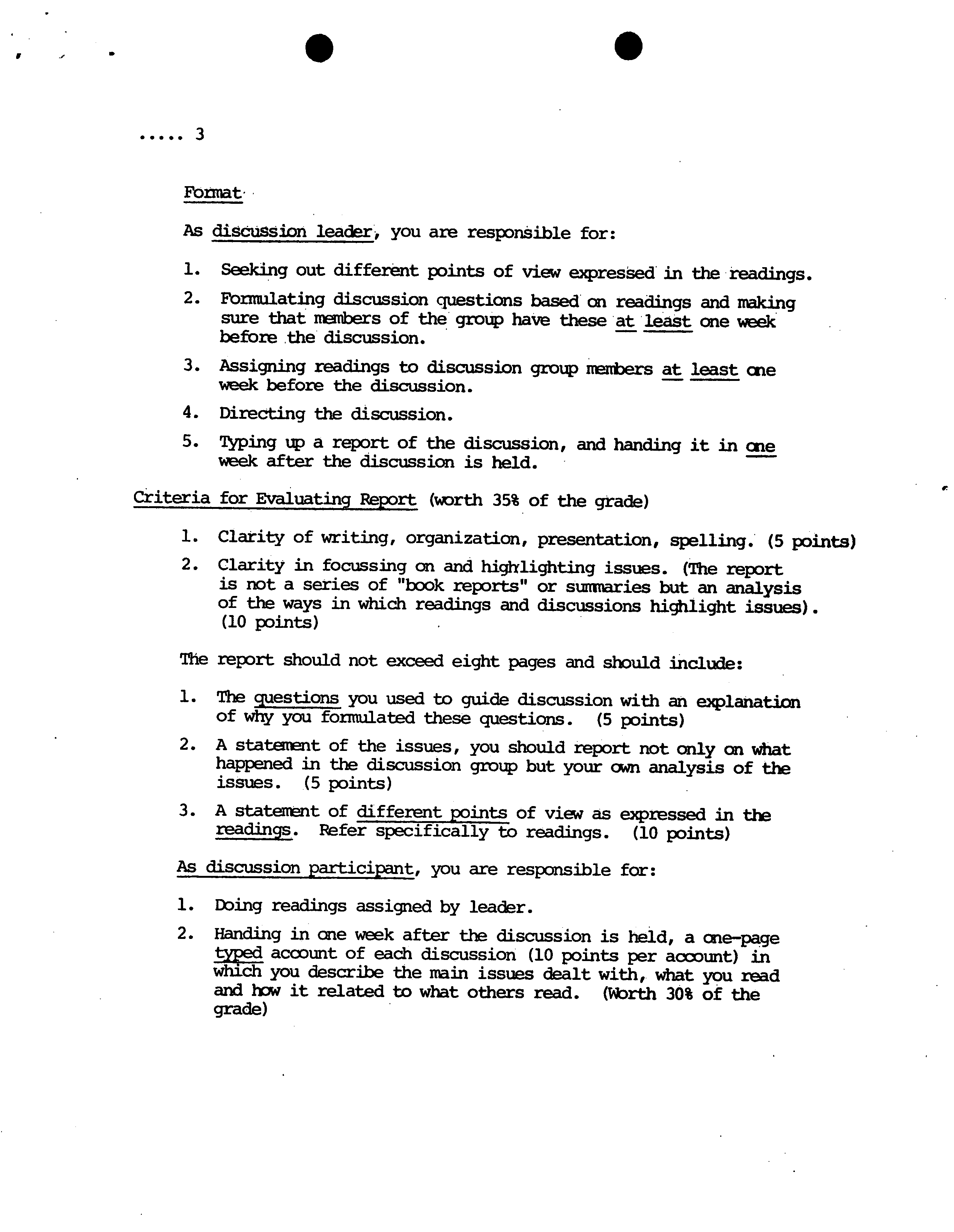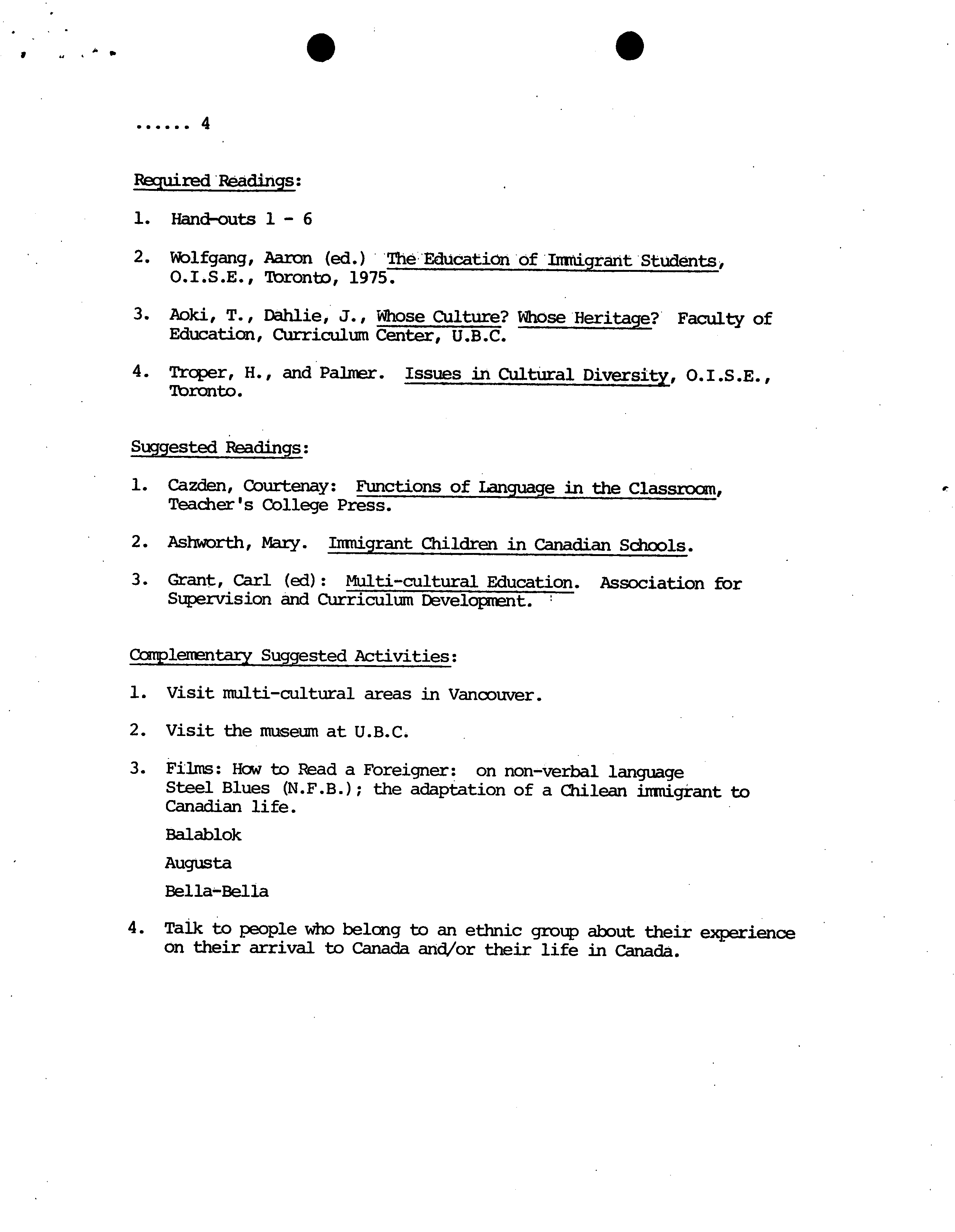EDUCATION 441
crJL'IJRAL DIFFEREES IN EDUCATION
StJER, 1979
INSTRUCTOR: Susana Cogan
731-1131 Local 251
291-0946
Lectures:
Intersession
Tuesdays and Thursdays 16:30 - 20:20 p.m.
May 8th - June 14th - MPX 9511/9512
Objectives:
The objectives of this course are to provide students with:
1.
an understanding of: culture, valu
es,
nülti-culturalisiu,
Canadian identity.
2.
abilities to teach in a cross-cultural classroom:
curriculum develont, use of materials, program and
material evaluation; awareness about social issues related
to a cross-cultural classroom.
3.
familiarity with the different ethnic groups that live in
B.C.
4.
familiarity with coimiunity services available in the
.Lower Mainland.
Requirements:
1.
Presentation
?
35%
2.
Group discussions
act as a leader
?
35%
act as a participant ?
30%
Expectations:
I. PRQJEC (worth 35% of the grade)
The purpose of the project is two-fold:
(a) to develop a familiarity with the different ethnic groups
that live in B. C.
.
?
S
.
2
(b) to develop materials that will enable the. student
to teach about a cultural group.
TO
pursue these objectives each student should choose one
cultural group and do:
(a)
a research On the group: (15 points)
- homeland: location, climate, history, population,
culture, language, government
- reasons for migrating: from country of origin to Canada
- the immigrant (or native) group in Canada and B.C.
(b)
develop materials in order to teach about the chosen
cultural group: (15 points)
- a course
- a lesson
- a story
- audio-visual
The materials may be aimed at different audiences: i.e.. pre-school,
primary grades, high school or adults. Choose your audience before
developing them.
(c)
Prepare a 15 minute presentation based on your research
and the materials developed (15 points).
Due Date: the last week of classes.
Main cultural groups living in B.C.: German, Italian,
Scandinavian, Greek, Chinese, Japanese, Portuguese,
Indian, Pakistan, East
Indians from Africa, Hungarian,
Ukranian, Native Indians, French, Phi ilippinos, South
Americans, Netherlands, Czechoslovaks, Arabs, Jews,
and others. (see hand-outs on aocess to ethnic groups)
II. GROUP DISCUSSI
ON
S
The object of the group discussions is to analyze the readings for
a broader understanding of the issues.
Each class rrirter will participate in all discussions and will
serve as lee
r
in one. Discussion groups will include approximately four
people per group.
S ?
S
•....
3
Format
As discussion leader, you are responsible for:
1.
Seeking out different points of view expressed in the readings.
2.
Formulating discussion questions based
on
readings and making
sure that nnbers of the group have these at least one week
before the discussion.
3.
Assigning readings to discussion group members at least one
week before the discussion.
4.
Directing the discussion.
5.
Typing up a report of the discussion, and handing it
in one
week after the discussion is held.
Criteria for Evaluating Report (worth 35% of the grade)
1.
Clarity of writing, organization, presentation, spelling. (5 points)
2.
Clarity in focussing on and highlighting issues. (The report
is not a series of "book reports" or sunmaries but an analysis
of the ways in which readings and discussions highlight issues).
(10 points)
The report should not exceed eight pages and should include:
1.
The questions you used to guide discussion with an explanation
of why you formulated these questions. (5 points)
2.
A statstent of the issues, you should report not only on what
happened in the discussion group but your cn analysis of the
issues. (5 points)
3.
A statement of different points of view as expressed in the
readings. Refer specifically to readings. (10 points)
As discussion participant, you are responsible for:
1.
Doing
readings assigned by leader.
2.
Handing in one week after the discussion is held, a one-page
typed account of each discussion (10 points per account) in
which you describe the main issues dealt with, what you read
and how it related to what others read. (Worth 30% of the
grade)
.
4
Required Rdings:
1. Hand-outs 1 - 6
2.
Wolfgang, Aaron (ed.) • The Education of Irnigrant Students,
0.I.S.E., ¶flronto, 1975.
3.
Aoki, T., Dahlie, J., Whose Culture? Whose Heritage? Faculty of
Education, Curriculum Center, U.B.C.
4.
Trcper, H., and Palmer. Issues in Cultural Diversity, 0.1 .S.E.,
Toronto.
Suggested Readings:
1.
Cazden, Courtenay: Functions of Language in the Classroom,
Teacher's College Press.
2.
Ashworth, Mazy. Ininigrant Children in Canadian Schools.
3.
Grant, Carl (ed): Multi-cultural Education. Association for
Supervision and Curriculum Development.
CanplenEntaxy Suggested Activities:
1.
Visit multi-cultural areas in Vancouver.
2.
Visit the museum at U. B.0
3.
Films: How to Read a Foreigner: on non-verbal language
Steel Blues (N. F. B.); the adaptation of a Chilean ininigrant to
Canadian life.
Balablok
Augusta
Bella-Bella
4.
Talk to people who belong to an ethnic group about their experience
on their arrival to Canada and/or their life in Canada.




